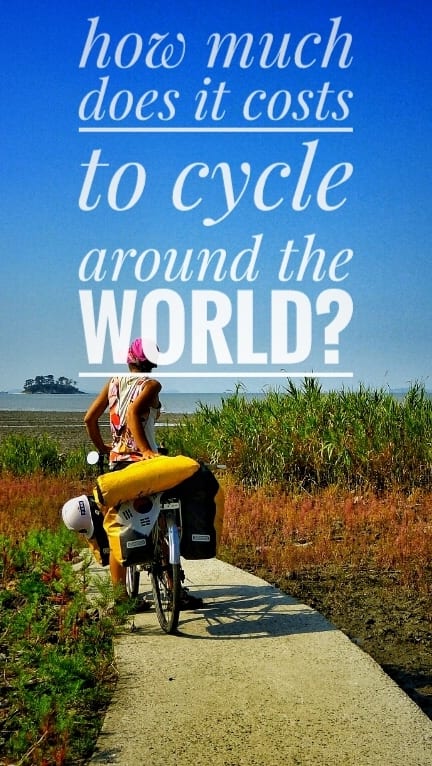Last Updated on 29 August 2024 by Cycloscope
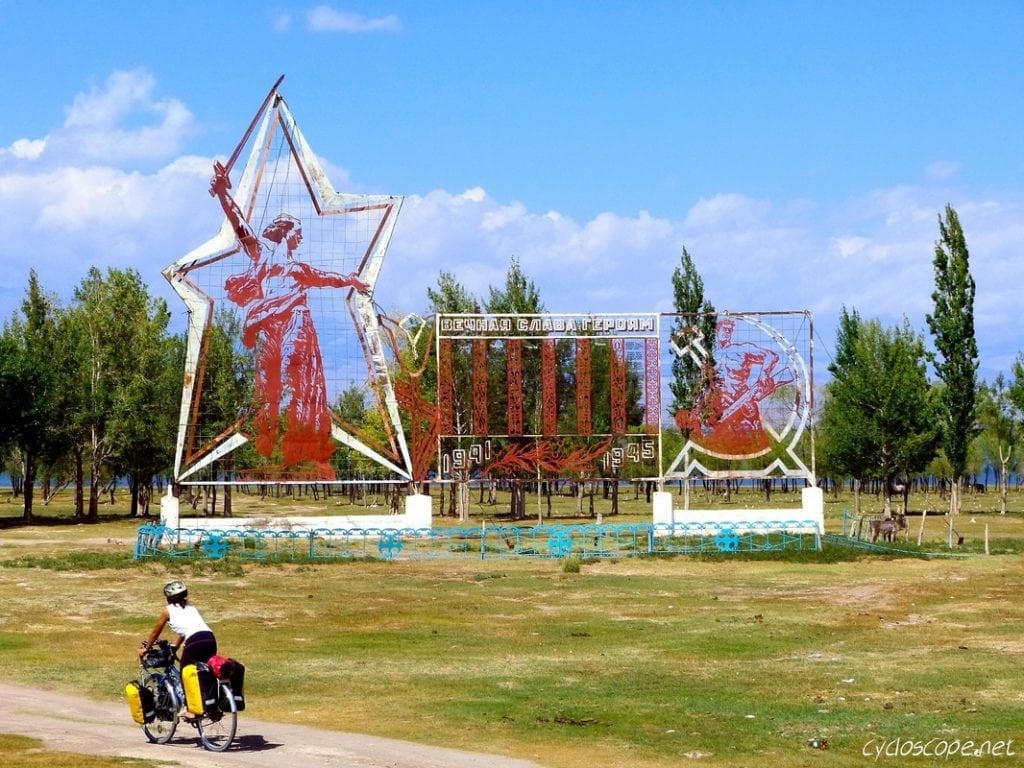
Bicycle Touring Budget:
Hints and insights to figure out how much will you spend on a long-term bike trip
Cycling around the world is the cheapest (and in our opinion) the most rewarding way to travel for the long term. However, how much you will spend during a bike trip, really depends on each person’s will and travel style.
When we tell people that we have been on the road since 2014, many think we must come from really wealthy families, that we are rich and everything. Well, it might surprise you that we actually come from very proletarian, hard-working families. Elena’s father is a whitewasher and her mother was a cook, while my father has a record shop (on the verge of bankruptcy) and my mother is a housewife.
Our traveling budget has been so far 650€ per month for both of us, which makes a bit more than 10€ per day per person. We seldom got small donations from family, friends, and even random people, but that wouldn’t amount to more than 20€ per month on average.
We traveled for 3,900USD x person x year! Some people spend that in less than a week!
This budget includes everything: food, accommodations, replacement gear, bicycle spares, additional clothes, visas, beer, and even cigarettes. We cycled mostly through cheap countries, but we also spent 3 months in Japan and 2 in South Korea, which are all but cheap, and, guess what, these were the countries where we actually spent less money!
We also met several people traveling with less than what we have, everything is possible. We’ll talk about some ways to travel forever (on a budget) in an upcoming post.
Why cycling in expensive country is usually really cheap
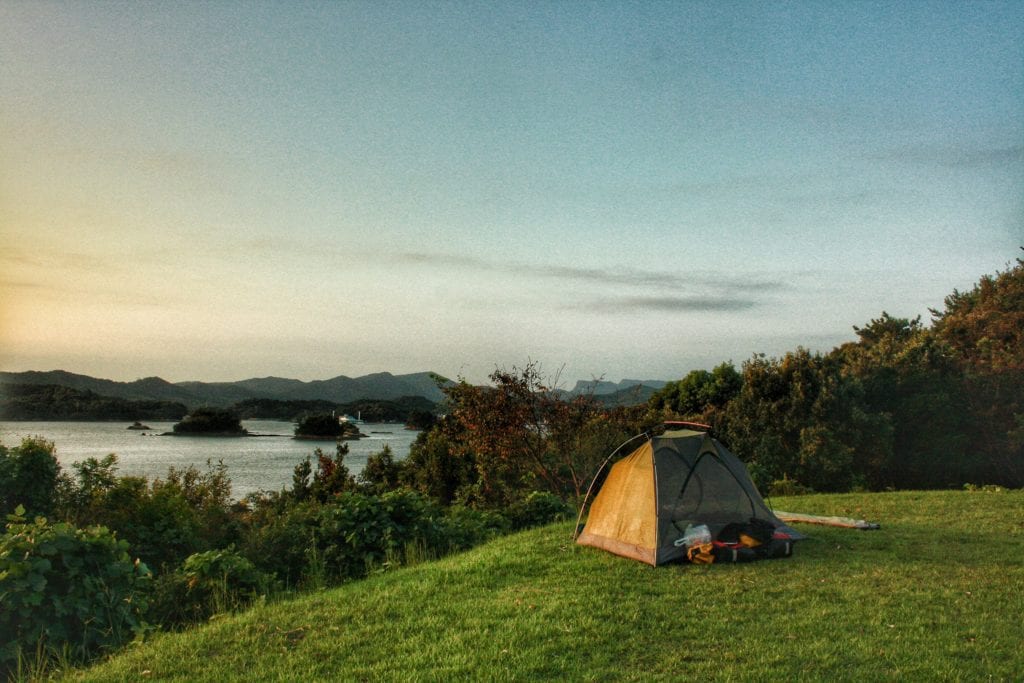
The problem in cycling cheap countries is that they will really test your strong will. When outside is 35C even at night and you see that beachfront bungalow for just 10 USD, it’s really hard to resist. The same goes for cheap restaurants. As opposite, when you’re bicycle traveling an expensive country, such as Japan, you simply won’t afford a 70USD ugly love motel, choosing to camp and cook your own food instead (well, unless your budget allows you to do that).
Developed countries also usually have wider and more active Couchsurfing and Warmshower networks, so it’s easier to find hosts.
That’s how we ended up spending an average of 8 USD per day during our three months in Japan, and we could afford to fly to the Philippines and even buy a new Sony Full HD Action Cam.
Different Styles of Bike Touring
Not all bike tours are made equal. The cheapest way to cycle around the world is to travel totally self-supported, which means carrying everything you need with you, including camping and cooking gear.
What is often referred to as a credit card style bike tour is instead a way of traveling light, with only a few clothes changes and no outdoor survival gear. That’s often the case for short-term bikepacking trips, as it can be quite expensive to pay for meals and accommodation every day, even in cheap countries.
Then there are of course the full-supported bike tours, operated by companies. Here you pay a lot of money to have the company arrange your route and accommodation and haul your luggage to the next hotel every day. These kinds of tours can be self-guided or led by a tour guide.
Traveling in couples is always cheaper than traveling solo
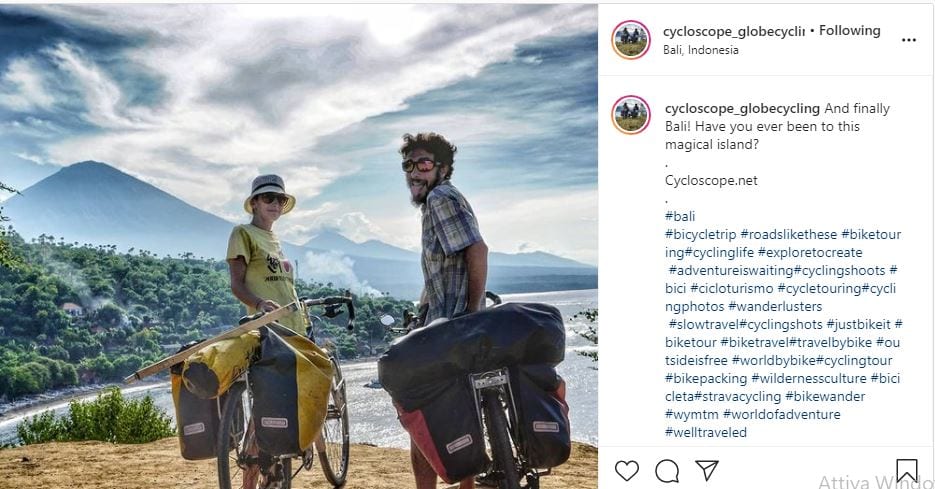
Some people like the company, some others prefer to be on their own, totally up to you. But remember that having a travel partner greatly cuts your expenses. That’s especially true for accommodation since the price of a single room rarely is much lower than a double.
Of course, there are hostels and you can just get a bed in a dorm but, not even considering the lack of privacy and the quality of the sleep, hostels are usually present only in cities, and most of the time you won’t be in a city if you’re traveling by bicycle.
Expenses for food are also cut, although not as much, but just realize you can buy a zucchini, some pasta or rice, cook on your camping stove, and share a cozy camping dinner with your partner. You can also eat it all yourself but the chance is there will be leftovers that are hard to store. It, of course, depends on your voraciousness.
The most expensive part of bicycle touring (or not?): Gearing Up
Investing a bit of cash on decent bike touring gear is certainly a good idea if you have a budget for that. It doesn’t have to be top-notch but having lightweight purposeful stuff can increase your comfort and enjoyment.
If you are on a really tight budget though, and willing to leave for the journey of your lifetime anyway, don’t overthink that, don’t worry, and don’t postpone. Leave with what you have, you might be in discomfort and suffer a bit, but you’ll hardly regret it.
Have a look at our article about:
How to turn a piece of junk into your almost-free touring bike
To get an idea of what you need, check also our series about:
Essential Gear for Bicycle Touring
Some Expenses you should consider
when traveling around the world by bicycle
Food and accommodation expenses for a bike trip
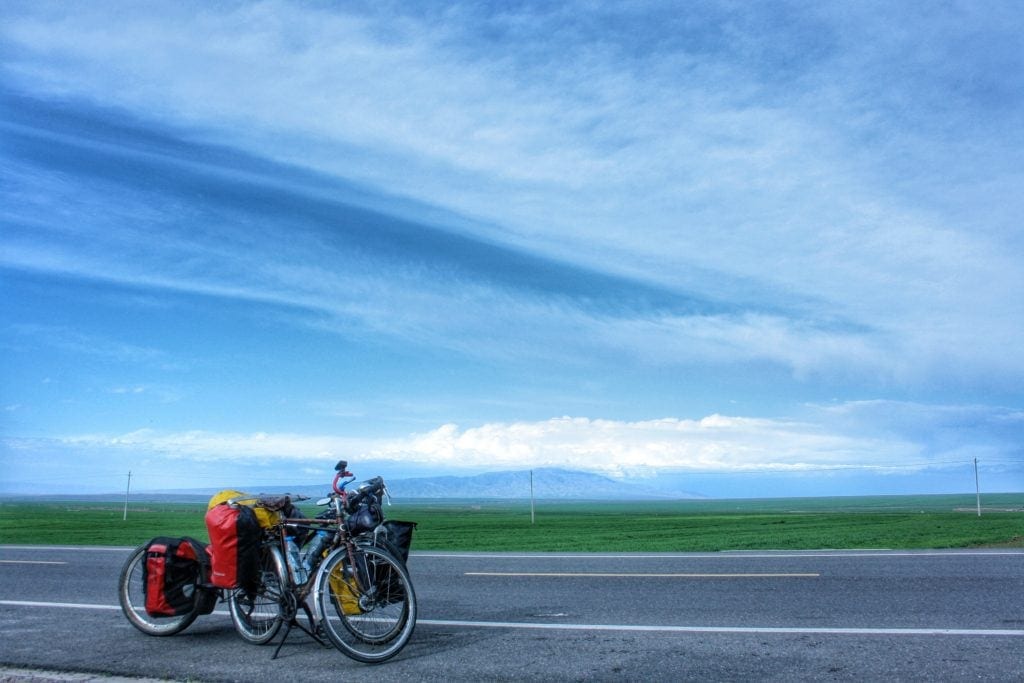
These are the obvious everyday expenses. About food: I will dare say that it’s possible to eat less than 8 USD per day in each and every country in the world.
Of course, what you’ll eat will strongly vary in quality, you’ll have to stick to local products and give up some goods, in some really expensive countries you might even have to give up beer, I’ll advise avoiding these ones 🙂
Accommodation: if you want to keep your budget low, camp as much as you can. Finding hosts and volunteering are alternatives. Accommodation is the biggest of your expenses, no matter how cheap the country is.
In most of Asia, it’s possible, and sometimes very easy, to find a room for around 10 USD per night, of course, it is cheaper if you can share it with your travel buddy.
Visas
Depending on where you are going and, most of all, where you’re from, visa expenses may amount to some serious cash. Western Europeans like us, together with the Japanese, have the best passports. Those coming from these countries are visa-free in many places in the world, and when visas are required, almost always are charged lower fees compared to US citizens and other English-speaking countries.
Those coming from developing countries, unfortunately, have the toughest times, with long waiting times, complex requirements, and higher fees.
Visa fees thus largely vary, you should gather the information beforehand and budget accordingly. We spent around 350 USD each on visas during our 2-years trip in Asia, mostly on visas for China and various extensions (Thailand, Indonesia).
Spares and replacements
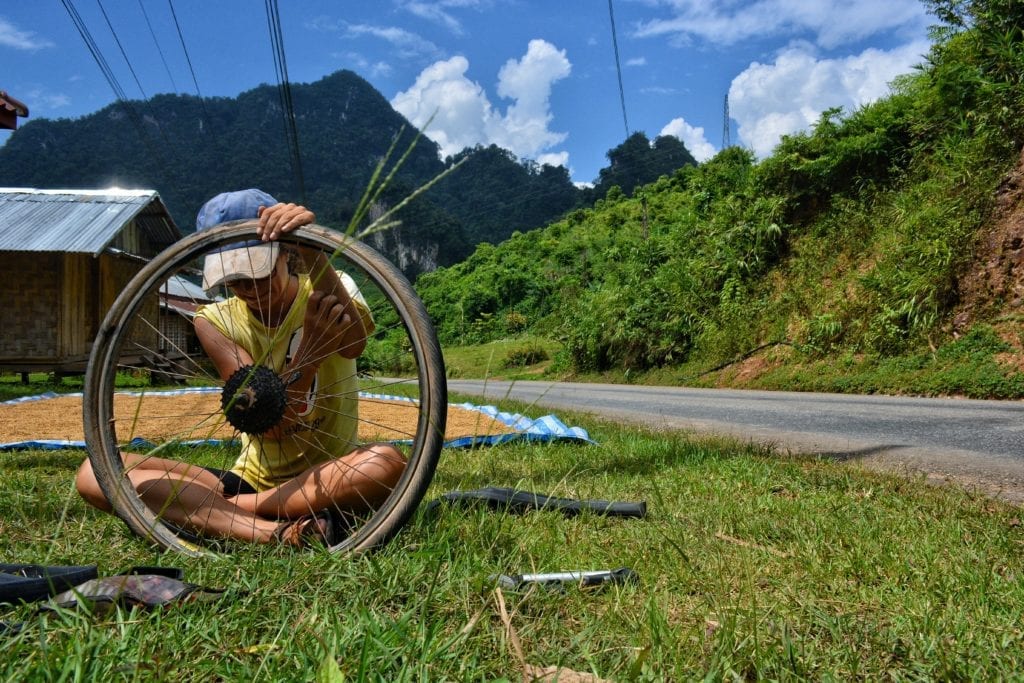
During a long bicycle trip, it’s more than likely that some components of your bike, camping gear, clothes, and even electronics, will fail and need replacement.
This might end up being eating a consistent slice of your budget, so be ready for that. Besides the most obvious tires, brake pads, and tubes, we had to replace both of our back wheels and rear derailers, even my shifters failed. Getting new cables and chains is mandatory every once in a while, and also the bar tape needs replacement if you ride with drop bars.
Bike spare expenses amounted to more than 400 USD in two years.
We also had to purchase new mobile phones, a new laptop, hard drives to store our pictures and videos, SD cards, battery packs, a new action cam, and even a second-hand DSLR camera. Electronics are not made to withstand such tough conditions.
We invested about 800 USD in new electronic gear.
Camping gear was worn out, the tent started leaking about 16 months into the trip, we didn’t replace that tough, just trying to find sheltered places to camp. We purchased an impermeable sheet for the tent floor and a few tent stakes that went lost, that was it. 20 bucks spent on camping gear.
Clothing also wasn’t a noticeable expense, you’ll be amazed to realize how easy it is to get new clothes if you don’t mind using low-quality, non-technical stuff. People get rid of their old clothes anytime, so it’s easy to get stuff from your hosts or even find bags full of clothes near the trash bins. More than once we got free, clean, almost-new, shirts, and shorts this way.
We probably spent overall about 60USD on new clothes (in 2 years), including shoes.
We managed to keep all of these costs within our monthly budget of 700USD per month.
Healthcare
If you travel for a long time, it’s possible that you’ll need to see a doctor. The money involved in this may largely vary, depending on which country are you in, and what problem you have.
While some countries, like Italy and Malaysia, have basically free healthcare for everyone, even visitors, the fees in places such as the USA or Thailand might be stellar.
Tip: if you need dental care, try to ask around if there are university clinics around, these are usually extremely cheap or even free. I got one extraction, two fillings, and full cleaning in Phnom Phen (Cambodia) for 20 USD!
Travel Insurance
We traveled without any insurance for two years, and I think that was a bit crazy, although most of the countries we visited had fairly cheap healthcare, I won’t imagine what would’ve happened if I broke a leg in Thailand.
Insurance for long-term bicycle trips though is very expensive, do your calculations and decide if you want to take the risks or not.
We plan on purchasing insurance from World Nomads for the next leg of our trip, you can get a quote using the widget below.
Transportations
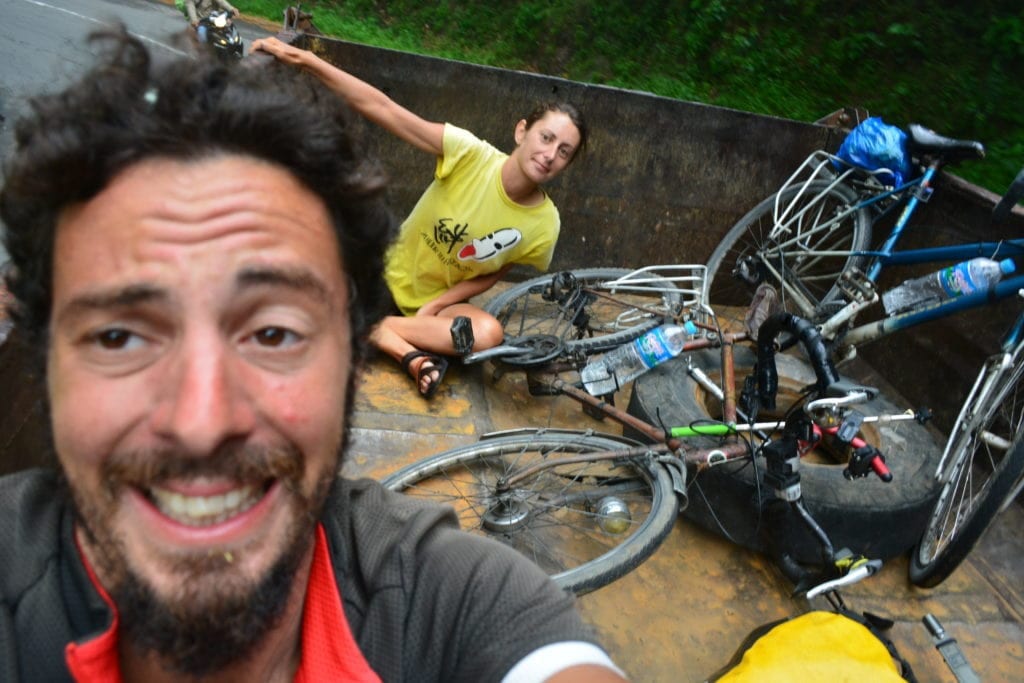
Well, the best thing when it comes to budget travel is that bicycle touring allows you to cut down the transportation costs to almost zero.
Yes, almost, because on a long-term bicycle trip it’s quite possible that you’ll end up taking some means of transport, especially if there are islands involved. Besides plane rides though, usually, local transports are not expensive, and if they are, you can always resort to hitchhiking trucks, truck drivers are the bicycle tourer’s best friends sometimes.
Roro ferries are usually pretty cheap, you can go, for example, from South Korea to Japan with less than 60USD. Train and buses often take bicycles on board.
Flights are a different matter since some airlines charge large fees for sports equipment, research the airlines with the cheapest luggage fares, it might be worth spending a bit more on the ticket while getting a cheaper fee for your bike.
We spent around 820USD on flights during our two-year trip:
- 270USD per person from Tokyo to Cebu, Philippines (Cebu Pacific Airlines Charge only 10USD per bike!)
- 30USD per person from Manila to Kota Kinabalu (Malaysian Borneo)
- 110USD per person from Bali to Kuala Lumpur
On Ferries we spent actually, even more, I think about 1,000USD, but we really took a lot of them, including 4 multi-day ferries (Black Sea, Caspian Sea, and two times in Indonesia) and two overnights (China to South Korea and South Korea to Japan), besides going to so many islands a bit everywhere.
Sightseeing
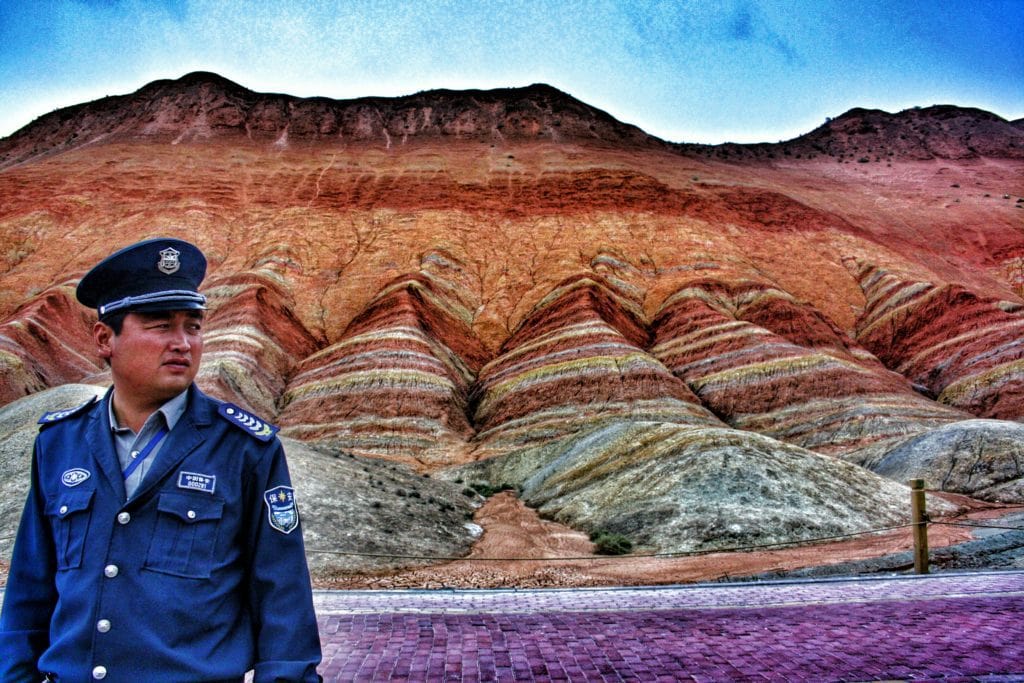
Some bike travelers don’t do any sightseeing at all, but we like to see some interesting attractions in places we might not visit again during our lives. Some countries have many free cultural sights to visit, while others, like China, for example, want you to pay for everything, sometimes also quite some money.
With our budget of 10 USD per day per person, we were forced to give up many of these sights, most notably Angkor Wat in Cambodia, and the hike on the Rinjani Volcano in Lombok (Indonesia), which requires a mandatory guide.
But we, nevertheless, managed to see quite a few impressive places, like the Mogao Caves in China, the Kelimutu Crater Lakes in Flores (Indonesia), and many others.
We calculated we spent a total of around 420 USD in sightseeing for both of us, mostly in China.
Did you find this useful? And you? What’s your bicycle touring budget? Contribute in the comment section below the article!
Check also
Essential Gear for Bicycle Touring and Bikepacking
How to turn a piece of junk into a decent touring bike
How to start bicycle touring
9 easy destinations for your first bike trip
21 best touring bikes under 1000$
